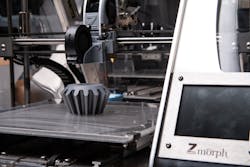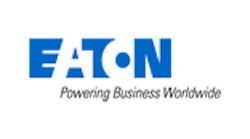In my final thoughts on the recently-held virtual Lighting R&D Workshop, hosted by the US Department of Energy (DOE) and co-sponsored by the Illuminating Engineering Society IES), I’m mulling in three dimensions. After listening to Guidehouse analyst Valerie Nubbe describe the impacts of 2020 economic forces and global events on LED source and luminaire manufacturing, and the divide between imported and exported product in the solid-state lighting (SSL) supply chain, I think later workshop speakers made an incredibly compelling case for the footprint of additive manufacturing to come.
Summarizing findings from the annual “2020 LED Manufacturing Supply Chain Report” developed by Guidehouse and utilized by the DOE in its research programs, Nubbe cited a startling 58% of LED luminaires were manufactured in China and 21% in Mexico, among SSL products imported to the United States. Still, Nubbe stated that commoditized products will not be competitive in the long term; high-end and emerging lighting applications would drive domestic market opportunities; and advanced manufacturing could see benefit from 3-D printing in the future.
Related article: DOE workshop brings academic focus to emerging commercial opportunities
Later in the workshop, Eaton’s John Trublowski presented on just that — the design process and potential advances in what he called “a fully integrated manufacturing approach” to a roadway luminaire, relying upon additive manufacturing. Print-on-demand capabilities could reduce cycle times and the need for specialty tooling, as well as increasing demand for on-shore (domestic) fabrication of luminaires. So in partnership with Xerox Corp. and the Lighting Research Center (LRC) at Rensselaer Polytechnic Institute, a team set out to prove the concept and evaluate its viability.
Now, Trublowski conveyed that the development process revealed some areas that require improvement, such as polymers with higher thermal conductivity; transmissivity and robustness of optics; increased automation and speed of printing, including refinement of net shapes to eliminate post-processing steps on components; and printable sensor improvements, since such component materials are just emerging. Altogether, though, Trublowski could not have presented a more clear-cut proposition for improving domestic manufacturing prospects in the SSL market if he had 3-D printed it live during the workshop.
Related article: This isn’t your standard smart lighting blog
I’m really intrigued by this area. And I am not trying to act as though it is just coming to our attention. We have visited with well-known LRC scientist Nadarajah Narendran and his protégé Indika Perera (one of 40 Under 40 honorees in 2020) and have published some of their work on 3-D printing in the magazine and on our website. They have also presented at our Strategies in Light event on the outlook for additive manufacturing. Still, it’s encouraging to see the 3-D printing work is making the cut with DOE-funded R&D, and the future prospects look tantalizing — possibly resolving issues of materials and components supply, inventory, flexible demand, and custom design costs.
For up-to-the-minute LED and SSL updates, why not follow us on Twitter? You’ll find curated content and commentary, as well as information on industry events, webcasts, and surveys on our LinkedIn Company Page and our Facebook page.

Carrie Meadows | Editor-in-Chief, LEDs Magazine
Carrie Meadows has more than 20 years of experience in the publishing and media industry. She worked with the PennWell Technology Group for more than 17 years, having been part of the editorial staff at Solid State Technology, Microlithography World, Lightwave, Portable Design, CleanRooms, Laser Focus World, and Vision Systems Design before the group was acquired by current parent company Endeavor Business Media.
Meadows has received finalist recognition for LEDs Magazine in the FOLIO Eddie Awards, and has volunteered as a judge on several B2B editorial awards committees. She received a BA in English literature from Saint Anselm College, and earned thesis honors in the college's Geisel Library. Without the patience to sit down and write a book of her own, she has gladly undertaken the role of editor for the writings of friends and family.
Meadows enjoys living in the beautiful but sometimes unpredictable four seasons of the New England region, volunteering with an animal shelter, reading (of course), and walking with friends and extended "dog family" in her spare time.






